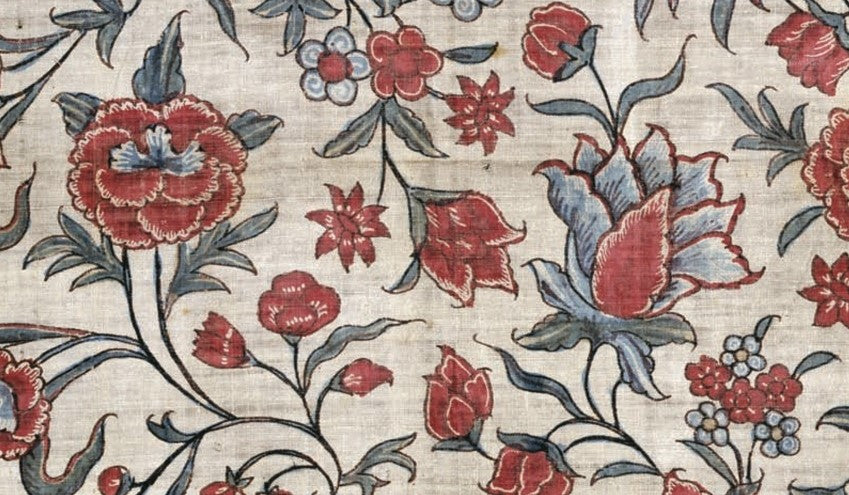
Sewing Seeds

Image: Chintz, Block printed cotton, India, 18th century
While fields and gardens are still in bloom in the UK - if a little wilted - we dip into an article from Selvedge’s archive on the cultural significance of flowers. From Sewing Seeds, in Issue 52 by Sarah Jane Downing: “Even for the least horticulturally minded, flowers fill our closets and our homes. You might eschew chintz or floral frocks, but there will be few who avoid the odd tea towel or embroidered handkerchief. Flowers have been regarded as nature’s jewels since the dawn of time, a fragrant symbol of blissful times in the Garden of Eden before the fall of man. Linking nature and sensuality, religion and spirituality, the flower is a sexual being without sex and symbol of God’s perfection.”

Image: Woman's coif of linen, Blackwork, England, 1570-99.
“For ancient Egyptians, Buddhists, and Hindus, the lotus blossom with its remarkable ability to bring forth beauty from the slime of marsh or river bed, and its simultaneous bearing of flower and fruit represents spiritual purity and enlightenment. Little in the way of Egyptian textiles survive but a fine linen tunic found in Tutankhamen’s tomb features a chain stitch embroidered panel with lotus design, and a tapestry woven cloth from the tomb of Tuthmosis IV has an all-over design of lilies and papyrus. Lotus motifs appear in Chinese embroidered robes and Japanese textiles, often stylised in wheel form to represent the cycle of life.”
“The rose is a ubiquitous symbol of love and beauty, dating from Greek and Roman mythology. It is no surprise that this divine symbol was adopted in both its forms by two of the most powerful families of medieval England. The red rose of Lancaster and the white rose of York were only united in 1485 with the founding of the Tudor dynasty. The rose was an extremely popular motif in Elizabethan society confirming support for Elizabeth I and honouring her purity. When Elizabeth I died at the age of 70, she left behind over a thousand dresses laden with jewels and bullion embroidery of gold and silver.”

Image: Rose furnishing fabric, by William Morris (1834-96). Printed chintz. England, 1883.
“The Arts and Crafts movement of the high Victorian era celebrated the Pre Raphaelite Brotherhood’s love affair with the medieval days of yore. Heavily influenced by Elizabethan embroidery and tapestry they sought to create medieval and classical images in gentle natural colours, including naturalistic depictions of British wild flowers with a particular love for honeysuckle.”
The full article, which looks at floral patterns up to Flower Power in the 1960s and 1970s, is available in Selvedge Issue 52: Botanical.
